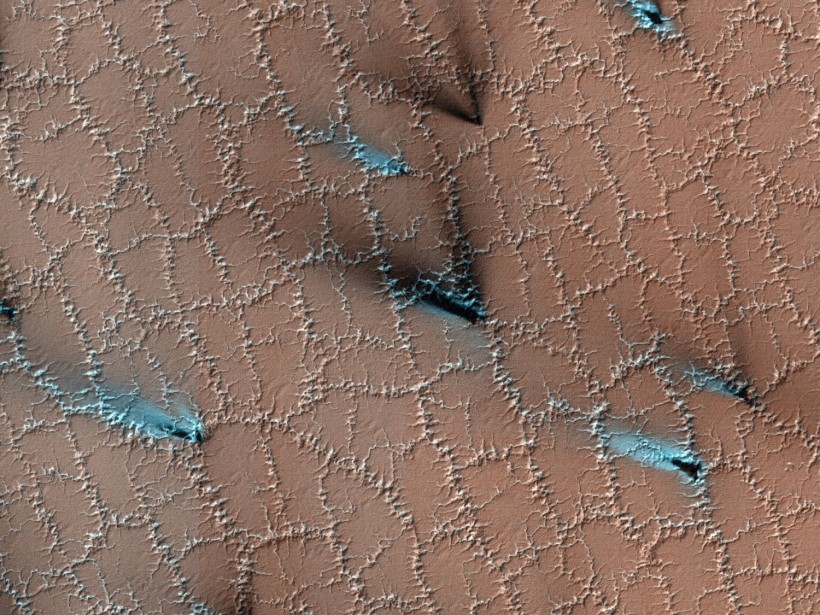One of the land masses on Mars has features similar to how the structures of lacy honeycombs or strands of a spider web look. This network of white lines is not created by any Martian life forms or even our probes sent to the red planet.
Experts theorize that the puzzle-like soil is an effect of the seasonal changes in the world's atmosphere, particularly from the reactions between the carbon dioxide and remnants of water molecules on Mars.
Through the specialized imaging device aboard the Mars Reconnaissance Orbiter called the HiRISE camera (High-Resolution Imaging Science Experiment), we could see these polygon-shaped terrains on the Martian surface.
The first discovery of these unusual features was presented in 2006 when the orbiter was first sent to Mars and observed the planet in orbit.
Carbon Dioxide and Water Ice on Martian Surface

According to the team behind HiRISE, the terrains were a product of the solid forms of carbon dioxide and water ice. These compounds were responsible for sculpting some parts of the planet's surface, in which the lines and shapes we see appeared.
The water ice in the soil freezes and splits the ground between fragments, making the surface appear similar to broken glass, spider webs, and uneven shapes.
During the springtime of the planet, this solidified ice sublimates and warmed the underground. The change in the ice forms warms its surrounding soil and splits the cracks into separate parts, leading to an erosion that could be noticed between channels of the polygon's boundaries, Universe Today reports.
These web-like soils are formed just through a short period of time but take some years to obtain their current shapes. Scientists believe that most of the activities that build these shapes happen during spring due to the weather's state and the sunlight's positioning.
The theory is backed up by the presence of the blue fan-shaped dashes that originate in the holes between the borders. These 'paints' are remnants of the gas that escapes from the layers of translucent dry ice coating buried beneath the soil.
History of Climate and Soil on Mars
The HiRISE team explained in the University of Arizona's Lunar and Planetary Laboratory press release that the gas that escapes from underground also brings particles of other chemicals, and this abundance is a factor that erodes the surface and the channels.
The particles then drop to the surface and leave dark marks similar to the shape of a fan. On other occasions, these particles also drop right where they originate. Other surfaces might have two or more fan-shaped marks, but this is normal due to the vents that close and reopen, allowing more emissions projected in different directions.
Studying these bizarre surface markings is essential to find out the history of Mars and the ice formation across its surface that might have existed long before life on Earth formed. The particles from these anomalies could also give us more understanding of the climate conditions that occur on the planet, Science Alert reports.
RELATED ARTICLE: ESA Releases New Map From Gaia Mission Revealing Additional Secrets About Milky Way, Stars, Asteroids, and More
Check out more news and information on Space in Science Times.




![Earth's Quasi-Moon Kamo‘oalewa Could Originate From Lunar Surface Not Asteroid Belt [Study]](https://1721181113.rsc.cdn77.org/data/thumbs/full/53275/89/56/50/40/earths-quasi-moon-kamo-oalewa-could-originate-from-lunar-surface-not-asteroid-belt-study.png)









